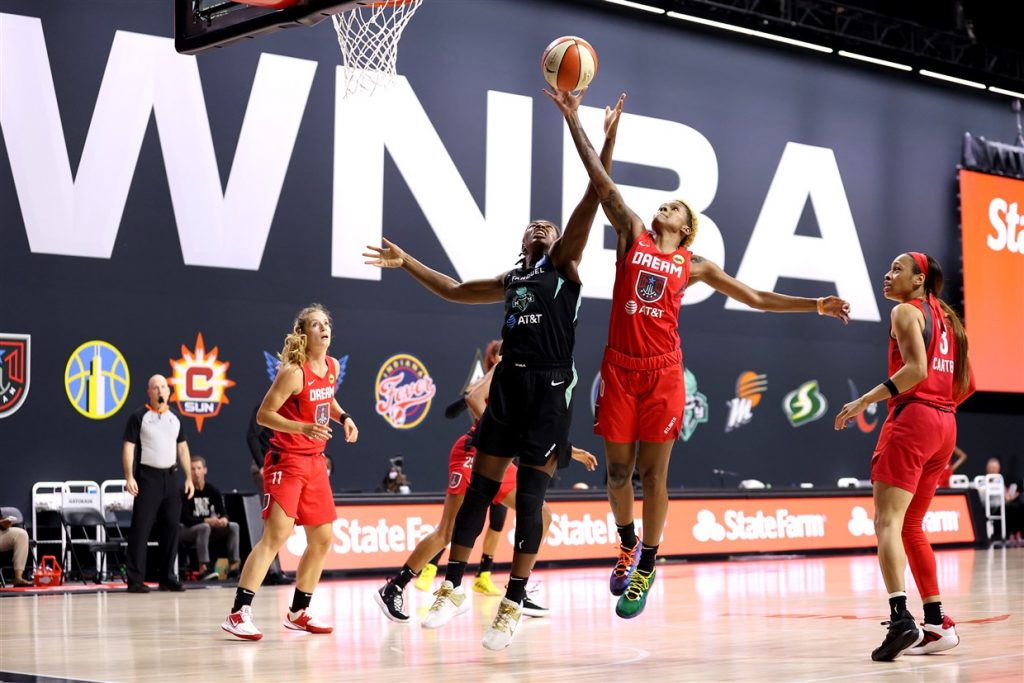(ThyBlackMan.com) March Madness is beginning and it looks like college basketball fans will get to see NCAA Tournaments in both men’s and women’s basketball after both were canceled last year due to the coronavirus pandemic. While powerhouse women’s college basketball programs like UConn, Stanford, and South Carolina are among the favorites to win the entire women’s NCAA Tournament, there are will likely be opportunities for teams like Michigan and Texas to make some noise and surprise some teams. The Texas Longhorns feature Charli Collier, who basketball fans might get to know for the next decade as the possibly number one overall pick in the 2021 WNBA Draft. Collier, who is a junior, recently declared for the 2021 WNBA draft. While that news might not be surprising for basketball fans who follow the NBA and see the amount of men who leave college after one year to pursue their NBA dreams, the WNBA’s rules about entering their draft are even stricter. It is time to ease the rules that do not allow talented female college basketball players to enter the most high-profile women’s sports league in America, the WNBA.
Currently, the WNBA’s age limit for entering the WNBA Draft is 20 years old for international players who play in basketball leagues overseas and 22 years old for U.S. players, both also being measured as of December 31 of the calendar year of the draft. This is in contrast to the NBA’s age limit to enter the NBA Draft that is 19 years old for both American and foreign basketball players, measured on December 31 of the calendar year of the draft. The rules mean that most male basketball players can enter the NBA following their freshman year of college and that most female basketball players can enter the WNBA following their junior year of college at the earliest. The list of NBA players who have succeeded after leaving for the NBA after their collegiate freshman and high school senior years is long and their “bust” rate is smaller than that of NBA players selected after exhausting their college eligibility.

The WNBA celebrates its 25th season this year and has been around long enough that most of today’s girls and women do not remember a world where they cannot play high-level basketball in the United States. The athleticism, talent, and depth of female basketball players has increased exponentially since the beginning of the WNBA. Women are playing so well at such incredibly young ages that a true freshman phenom like UConn’s Paige Bueckers has an opportunity to win at least one women’s college basketball national player of the year accolade and that would be historic. Interestingly, Bueckers will be joined by super recruit Azzi Fudd at UConn next season. If Fudd leaves up to the hype that makes her one of the greatest women’s basketball prospects ever as a freshman, neither she or Bueckers have an opportunity to leave to play professional basketball in the WNBA because of the WNBA Draft rules. For comparison’s sake, it would be similar to Zion Williamson being unable to translate his fantastic freshman year at Duke into millions for his family and himself the following year.
Of course, the salaries of WNBA players are not anywhere near that of their NBA counterparts but they are enough to make a good living and that is what most people go to college for, to make a good living. There is also an injury risk that goes with playing college basketball for free instead of “cashing in” when your basketball stock is the highest. It would be a fascinating debate to see whether Paige Bueckers or any other young female basketball prodigy would be taken high in the WNBA Draft without the three or four years of college basketball they are required to have.
Staff Writer; Mark Hines




















Leave a Reply